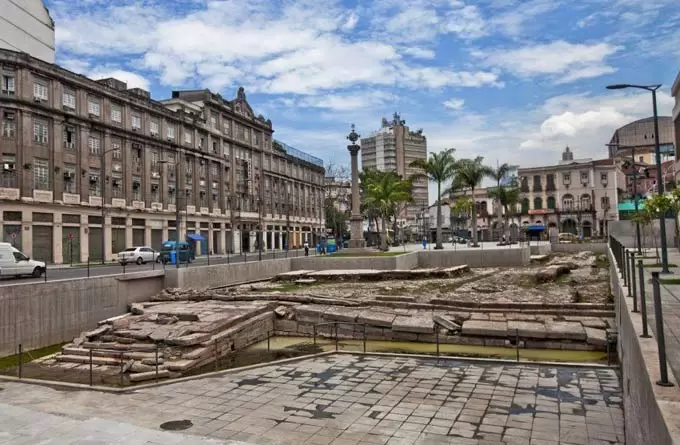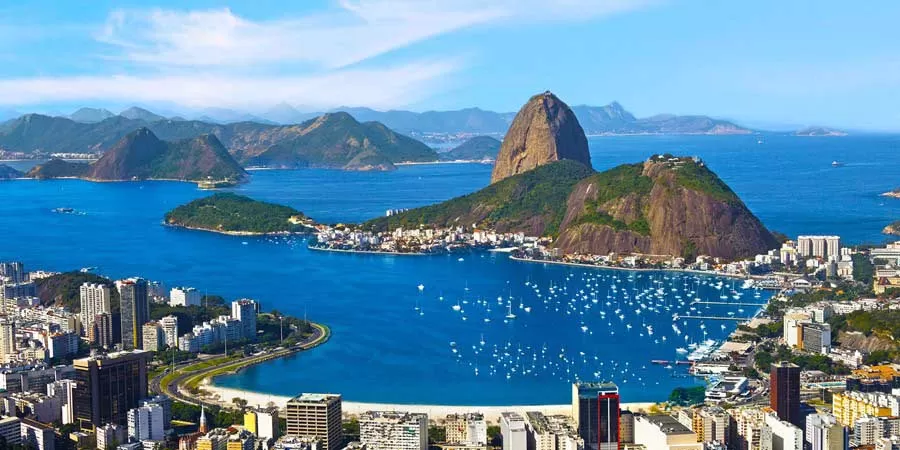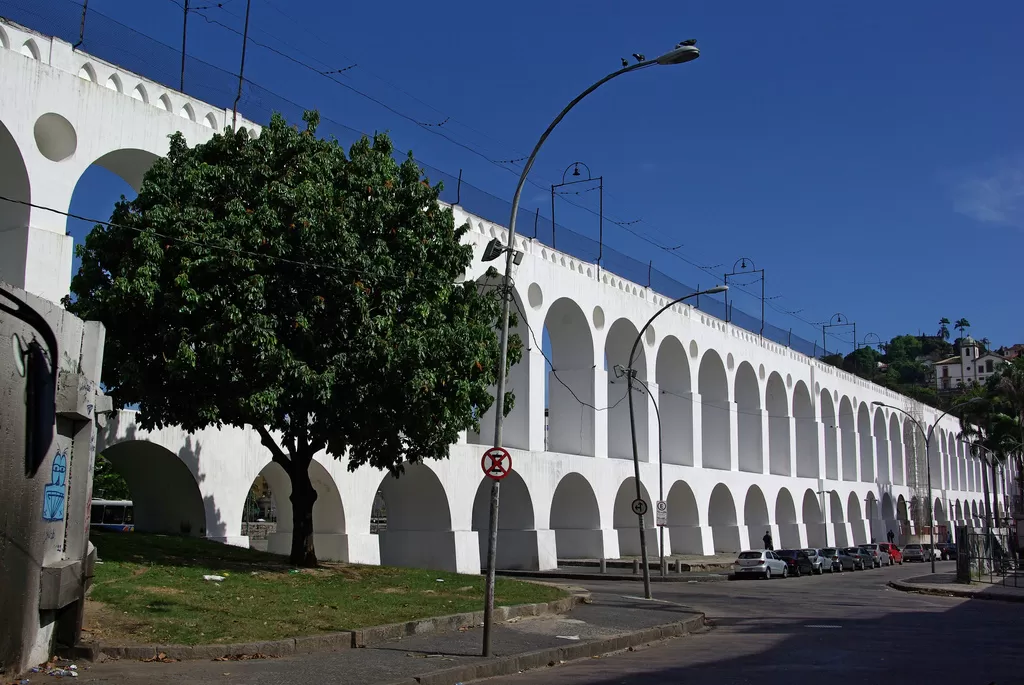Get to know the World and Cultural Heritage of Rio de Janeiro

It was on a Sunday, July 9, that Valongo Wharf, an archaeological site, received the title of World Heritage of Unesco. The place was the main port of entry for African slaves in Brazilian territory. The region is marked by resistance from Africans who were forcibly removed from their hometowns to serve as slaves. However, this nomination was not an isolated case.
Five years ago, The Marvelous City itself had already been nominated by Unesco as a World Heritage site. The nomination was presented by Instituto do Patrimônio Histórico e Artístico Nacional (Institute of National Historical and Artistic Heritage) – Iphan- and approved at the 36th Session of the World Heritage Committee in Russia. As you can see, it is not just now that Rio has been receiving important titles. To get to know more about World and Cultural Heritage of Rio de Janeiro, keep reading our article!
World Heritage Sites of Rio de Janeiro
The Valongo Wharf
One of World Heritage Sites of Rio de Janeiro is located in the port area of the city. Valongo Wharf is a place that refers to the Brazilian colonial past. Being one of the main ports of African slaves until the mid-nineteenth century, the place evokes painful memories of deep structural racism between whites and blacks. According to the Secretary of Culture of Rio, Nilcemar Nogueira, the nomination of Valongo Wharf as World Heritage of Unesco represents a step forward for the recognition and reparation of national memory.
To get to know Valongo Wharf better, guarantee you stay at a hotel near the region, such as Pompeu, located in Porto Maravilha. The hotel offers maximum comfort to its guests.
Rio de Janeiro
Most people recognize The Marvelous City because of its many tourist attractions, such as Christ the Redeemer, one of the Seven Wonders of the World. What many do not know is that The Marvelous City itself is considered, by Unesco, one of the World and Cultural Heritage.
Since nomination in 2012, the city has underwent a series of actions for preservation of its cultural landscape. Sugarloaf Mountain, Corcovado, Botanical Garden and other tourist attractions have received reinforcements in cleanliness and safety.
To check out the revitalization of Rio’s tourist attractions, you can stay at Gamboa, a well-located hotel, near to subway station Presidente Vargas. This is a great option if your priority is to have easy access to Rio’s tourist attractions..
Intangible Cultural Heritage
Cordão da Bola Preta
Founded in 1918 by a group of Carioca friends, the oldest carnival block in Rio de Janeiro and one of the oldest in Brazil was declared a cultural heritage of Rio de Janeiro in 2007. According to the decree, signed by the mayor César Maia, Cordão da Bola Preta receives this title due to its cultural importance for Rio de Janeiro and to the reference that it has become for Rio’s carnival, passing from generation to generation.
If you want to enjoy an out of season carnival with Bola Preta, just go to the headquarters of the block, located on Rua da Relação, in downtown Rio. The agenda is always busy, with several events that, as well as the own block, please all tastes. For your convenience, you can stay at one of Rio’s hotels, such as Arosa.
Escolas de samba (Samba school)
About carnival, another landmark of this era is also a Rio’s heritage. Originated in the late 1920s, in the Estácio neighborhood, carnival associations are one of the key points that define Rio’s Carnival. It was in 2008 that samba schools became recognized as cultural heritage of Rio de Janeiro.
More than parading, samba schools receive visitors all year for feijoadas, a Brazilian food, concerts and parties in their blocks. If participating in these events is part of your travel itinerary, be sure to stay in a hotel in downtown Rio de Janeiro, such as the Arosa, which allows easy access to samba schools.
Bossa Nova
In 2007, it was Bossa Nova turn to be recognized as a cultural heritage in Rio. This genre of Brazilian popular music started in the late 50’s and is known around the world. Many artists became famous in this genre such as Tom Jobim, Vinícius de Moraes and Chico Buarque.
Literary works of Machado de Assis
Portraying in his work Rio’s society, Machado de Assis exposed social inequality in his time. However, that is a problem that lasts until today. As one of the great names of national literature, the writer contextualized Brazilian identity in his writings.
Pixinguinha Musical Work
Composer of “Carinhoso” and other famous Brazilian popular music, Alfredo da Rocha Vianna Filho, best known as Pixinguinha, is one of the great cultural references of The Marvelous CIty.
Fla x Flu and Flamengo’s Crowd
As the great journalist Nelson Rodrigues would say, Fla x Flu appeared “forty minutes before nothing”. Therefore, it is fair that the most charming and classic football game in the world is considered a Intangible Natural Heritage of Rio de Janeiro, by a decree signed in 2012, by Mayor Eduardo Paes.
Also Flamengo’s crowd, the biggest crowd in the world according to Fifa’s ranking, was declared Cultural Heritage of Rio, by a decree signed by the mayor César Maia, in December of 2007.
Centro Luiz Gonzaga de Tradições Nordestinas
Best known as “São Cristóvão Fair”, Centro Luiz Gonzaga, located in São Cristóvão, was declared one of the Cultural Heritage of Rio de Janeiro, by mayor Aloísio Freitas in 2008. There you can find typical food, music, dance and among other thing brought by Northeastern people to Rio. Centro Luiz Gonzaga opening hours are from Tuesday to Thursday, from 10 a.m. to 6 p.m., on weekends, starting at 10 a.m of Fridays until 9 p.m.of Sundays. To take advantage of everything the fair offers, you can stay at the hotels Gamboa or Pompeu and have easy access to this and others World and Cultural Heritage of Rio de Janeiro.
Arcos da Lapa
Carioca Aqueduct or Arco da Lapa, built in 1732, to bring water from the river Rio Carioca (now called Santa Tereza) to Morro de Santo Antônio, was listed as a Historical Heritage in 1938 by Instituto do Patrimônio Histórico e Artístico Nacional (Iphan). This is one of Rio’s most visited tourist attractions and is a symbol of Rio’s bohemian neighborhood: Lapa. To stay close to Arcos da Lapa, you can choose comfortble hotels such as Arosa hotel.
The importance of World and Cultural Heritage of Rio de Janeiro
More than symbols, World and Cultural Heritage of Rio de Janeiro define the national identity of Brazil to the world. Both the landscape and the cultural manifestations, that take place in Rio, are pieces that differentiates Rio de Janeiro from other Brazilian cities. In addition, we must not forget that the nominations of World and Cultural Heritage of Rio de Janeiro, in a way, awaken the self-esteem of those who live in The Marvelous City.
With this information about World and Cultural Heritage of Rio de Janeiro, you can discover The Marvelous City from a new perspective, don’t you think? Make an online reservation on hotels in downtown Rio and enjoy what the city has to offer!
Other useful links:
hotel in Rio
hotel próximo ao Vivo Rio




